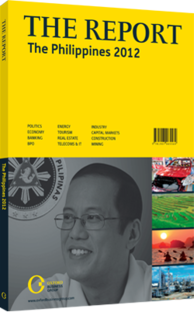OBG talks to Surin Pitsuwan, Secretary-General, ASEAN

Interview: Surin Pitsuwan
How will a free and open investment regime be achieved as a means to increase ASEAN’s competitiveness in attracting foreign investment?
SURIN PITSUWAN: ASEAN’s vision for an integrated regional economy includes free flow of investment and services. Toward this end, we have identified a number of strategic initiatives in those areas set out in the ASEAN Economic Community blueprint, and have taken concrete steps to realise these by 2015.
One of the bold steps that ASEAN undertook to establish this free and open regime is the ASEAN Comprehensive Investment Agreement (ACIA). This agreement is comparable with other international investment agreements in terms of scope, rights and obligations, and is based on international best practices.
One of the important pillars of this agreement is its liberalisation component. Under this, ASEAN adopted the negative list approach in the formulation of the so-called reservation list. We are hoping that member states will be able to complete their domestic approval process for the reservation list and for the agreement to come into force soon. ASEAN took further steps by also agreeing to progressively reduce or eliminate the reservations contained in the list following the strategic phases in the AEC blueprint, and member states are now working on the modality to improve the investment regime in the region via the reduction or removal of remaining restrictions for a free investment regime.
We has also been implementing the ASEAN Framework Agreement on Services (AFAS) through progressive liberalisation of trade in services, particularly on Mode 3, which is essentially about investment in the services sector. As a further step, ASEAN has leaped forward in the AEC blueprint, where it sets targets and milestones to increase coverage of sectors and subsectors and deepen levels of commitment, especially for Mode 3. ASEAN has also entered into free trade agreements with dialogue partners that cover investment, and through these we try to expand our reach in terms of sources of investment. We have to stress that our approach to establishing a free and open regime is not limited to simply liberalising our investment schemes. If we want to be and remain competitive, we have to provide adequate protection for investors and their investments.
Our agreements have provisions that safeguard investors by giving them direct recourse through the investor-state dispute settlement mechanism instituted within the framework of the investment agreement. We are also working to promote the facilitation aspects. These are two of the main pillars of the ACIA, and important factors in attracting and increasing intra-ASEAN and foreign investment.
How are logistical integration issues being addressed to transform ASEAN into a single market?
PITSUWAN: Logistics services is the 12th priority integration sector, and based on this ASEAN plans to achieve full integration of logistics services by 2013. ASEAN has a roadmap for this process, which has been endorsed by the ASEAN economic ministers in August 2007. The strategy provides detailed measures and action plans to integrate logistics services, which involves various ASEAN-related bodies in trade and services, Customs, transport, telecommunications and investment, as well as related ASEAN private sector bodies. At the 17th ASEAN Summit in October 2010, leaders addressed important issues such as market access, trade and Customs facilitation and supply chain security.
From the trade in services side, significant progress made in the liberalisation of the nine logistics services subsectors. This year the eighth package of AFAS is targeted for completion, which will push all member states to open their logistics services up to 51% ownership by foreign shareholders.
By the end of 2013, foreign equity shareholding is to be opened up to 70%. These ambitious targets will ensure that trade barriers will be kept to minimum levels. Furthermore, links between the logistics providers among ASEAN countries will also be greatly improved.
You have reached the limit of premium articles you can view for free.
Choose from the options below to purchase print or digital editions of our Reports. You can also purchase a website subscription giving you unlimited access to all of our Reports online for 12 months.
If you have already purchased this Report or have a website subscription, please login to continue.

